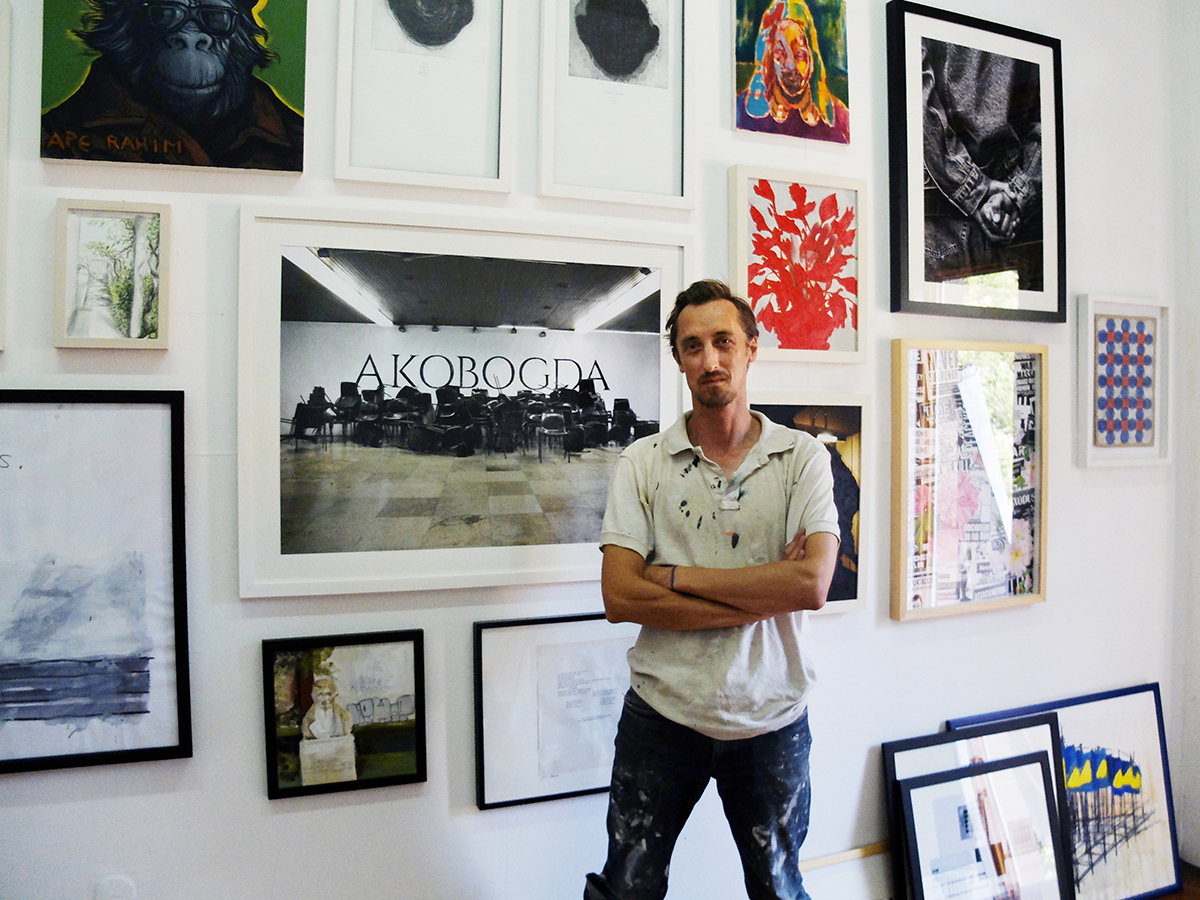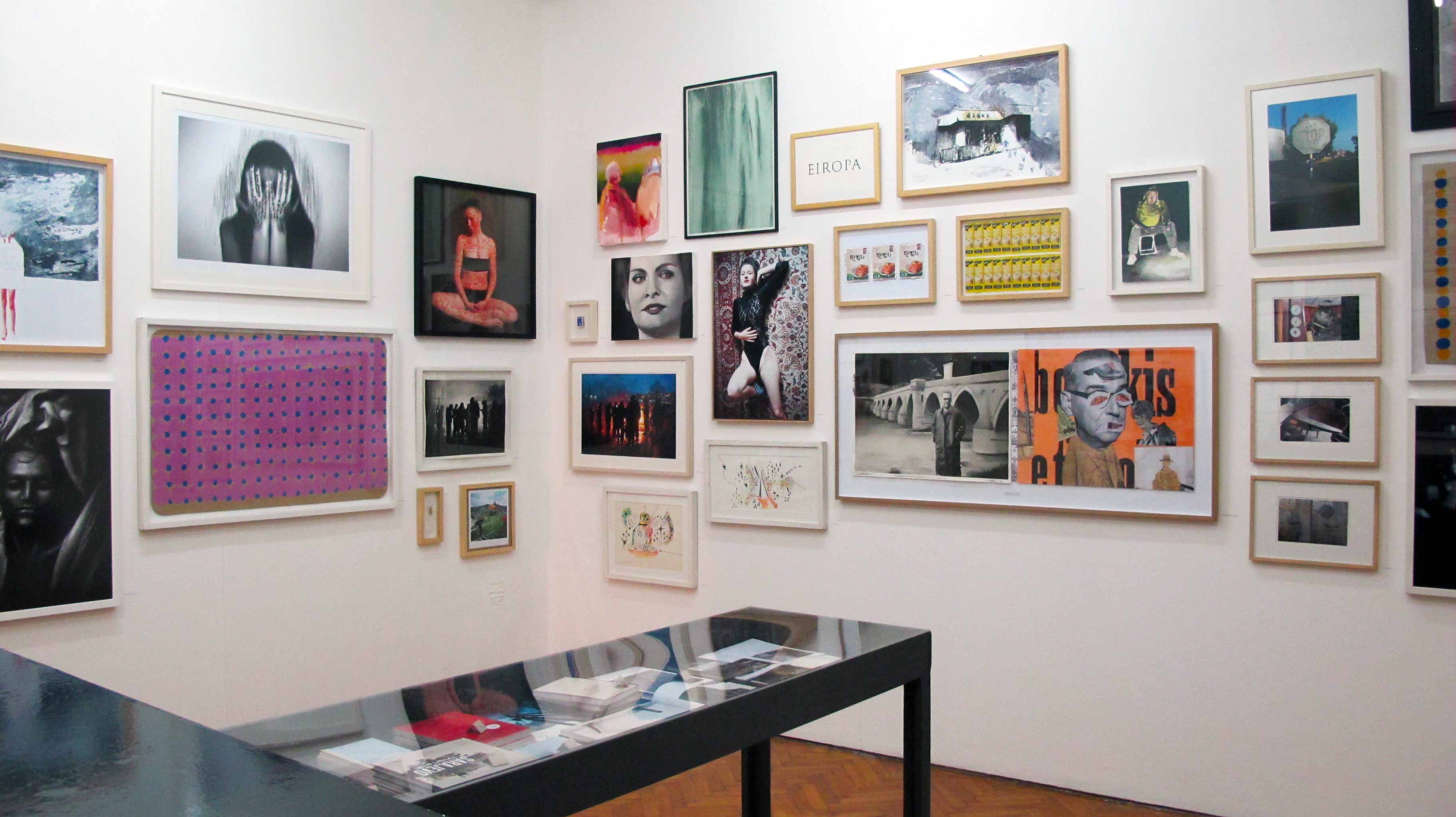The art market hardly exists, the economy is unstable, the situation is difficult. However, creativity is in inverse ratio to all of this: the contemporary art scene is active and dynamic. Sári Stenczer from Artportal (Hungary) visited Sarajevo and had a talk with Pierre Courtin, owner of Duplex100m2 Gallery.
Duplex100m2 Gallery in Sarajevo should be familiar to those who deal with visual arts outside of Bosnia: on the one hand, because the gallery attended the Art Market Budapest in the last two years, and on the other hand, because some of their artists regularly participate in international exhibitions. However, it is possible that only a few know the unique history of the gallery.
Read EAST ART MAGS on erstestiftung.org magazine
EAST ART MAGS is a project of four art magazines in the East Central European region: Artalk (CZ/SK), Artportal (HU), Revista Arta Online (RO) and SZUM (PL). EAM is a content making and publishing platform with the aim of capacity building in art journalism in the region, supported by VISEGRAD FUND and AFCN.
erstestiftung.org magazine shares selected articles from EAM and translates them into German and – if not yet available – English.
At the end of summer 2017, Artportal visited Pierre Courtin, the founder of Duplex100m2 Gallery, in the centre of Sarajevo. The gallery will close in December 2017 for several month.
Tell us briefly how a French Erasmus student became a gallery owner in the capital city of Bosnia and Herzegovina.
Actually, it was an accident. While studying at ENSBA (École Nationale Supérieure des Beaux-Arts, Paris – editor) I applied for a scholarship in Sarajevo, and I was granted the opportunity. Maybe it was because I was the only one applying – it was in 2001. After that visit I travelled back to Sarajevo several times, and the idea came to life: I had to open a contemporary art gallery in the centre of the city. This was Galerija 10m2.
Initially I had not planned to stay, I thought that I would run the place for about two years, but the machine could not be stopped. The whole thing was building, project by project, and it was impossible to leave the captain’s bridge. What’s more, by then I had already wanted to have a gallery of my own for a long time, because earlier as a teenager I used to work for a gallery in Lille at weekends. The opportunity in 2004 in Sarajevo was right.
How many artists can you deal with at one time, and what is the principle of your gallery?
I work with a dozen artists daily, but we frequently have guest artists as well. From the beginning, the gallery’s mission was to deal with the contemporary art of Bosnia and Herzegovina and the Balkan region. To be more concrete, what most interests me is remembrance and the questions it poses.
Do you work with other galleries or institutions in the Balkans? Or is it easier to make connections outside the region?
There were many instances of cooperation, but honestly, there can never be enough of them, and we have to further strengthen this activity. It is obviously easier in Sarajevo, because we are familiar with the place; here I collaborate continuously with festivals or private partners. We also became part of the Balkan network; we have good connections everywhere. It is not the ideas or projects that we lack but the financial backing – here I am mostly talking about Bosnia and Herzegovina, Serbia, Croatia, and Slovenia. This slows down our movement, the today indispensable cooperation.
Are there real collectors in the country, or are most of your sales abroad? Are people still interested in Southeastern European art there, or has the interest shifted away geographically?
An art market hardly exists in this country. Collecting has no real tradition and there are no serious contemporary collectors. It would be way too easy to argue that it is because of the economic crisis, which causes continuous depression. For me it is a cultural rather than a financial problem. We have a couple of local buyers, of course, but they mostly buy pieces out of love. The majority comes from the international community living here; they have good jobs and salaries, and they can allow themselves to buy an artwork occasionally. Most of the collectors we are in touch with are foreigners, mainly French, German, and Swiss.

Pierre Courtin. Photo: Krisztina Erdei
How would you describe contemporary art life in Bosnia in a few words? What are a young artist’s prospects?
You could write a book about it. What’s really important is that the institutional situation is disastrous, yet despite almost non-existent financial support, countless exceptional artists work hard, and the scene is very active.
I feel that there is a peculiar balance between the richness of creativity and the lack of institutional opportunities.
Naturally, everybody protects their positions here as well, but I experienced in Sarajevo that solidarity is also extremely important. Many private initiatives have been started; young artists, researchers open independent places, so it can be said that the lack of institutions forced members of the scene to find alternative methods and means to operate. It is clear from this how hard it is for artists to be present, especially in the international scene. Only a few galleries display Bosnian artists in art fairs. There have never been enough resources for the art of the region to make its way to Paris/New York/London/Basel.

Lana Cmajcanin, Geopolitical Zones of the Present, 2016, Duplex100m2 Gallery, Photo: Krisztina Erdei
And what about politics? How much do artists deal with local or international conflicts, with the traces of their national history and the Yugoslav Wars? How does this burdened context affect your work?
Well, again, I could write a whole essay just on this topic. Of course the past and present of Bosnia and Herzegovina have a huge influence on contemporary art. The war tore apart and deformed the country, exactly where it was most beautiful. Today there are two entities (the Republika Srpska and the Federation of Bosnia and Herzegovina – editor) and they live side by side in a totally useless political system defined by the Dayton Agreement, with a disastrous economy. Their future is completely uncertain.
The artists I work with all lived through the war; some of them experienced it themselves, others survived in forced migration. The youngest grew up among the ruins, then on an enormous construction site. However, it is not so much the war but rather remembrance and identity that appear in their works. Remembrance is still being built and is forming, because in this country it is not really collectively lived. Maybe those who graduate today are the first who try to separate themselves from it.

Exhibition at Duplex100m2 Gallery, Sarajevo, August 2017. Photo: Krisztina Erdei
During this last 15 years, did you need to change your strategy? Can you tell us about any of your plans for the future?
My basic principle has always been the same: complete independence, particularly regarding the professionalism of the artistic programme. Duplex provides opportunities to many artists, helps them in creating and displaying their works, and organizes exhibitions on local, regional and international levels. It improves their visibility in and out of the country, especially at international art fairs; connects them with members of the contemporary scene – artists, curators, institutions, and private individuals. We are doing this in the hope that it helps to create new projects and to establish a platform for new meetings and opportunities for cooperation.
Now I am thinking about next year’s structure. I will close the exhibition space in December, but it does not mean that Duplex will stop operating. In the first six months we will edit a retrospective book about our activities between 2012–2017 (there is a thick publication about the period between 2004–2011 – editor), and we are thinking about shooting a documentary about Bosnian art life, from 1995 until today.
Ideally the gallery space will be reopened in June 2018.
The interview was held and recorded in Hungarian.
First published on 11 September 2017 on Artportal.hu.
This text is protected by copyright: © Sári Stenczer. If you are interested in republication, please contact the editorial team.
Copyright information on pictures, graphics and videos are noted directly at the illustrations. Cover picture: The former bobsleigh run of the 1984 Winter Olympics in Sarajevo served as a cover for the Serbian armed forces during the siege of the city. Photo: © Krisztina Erdei.